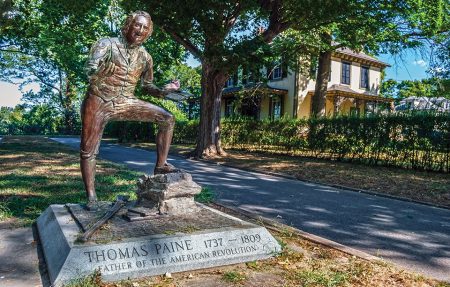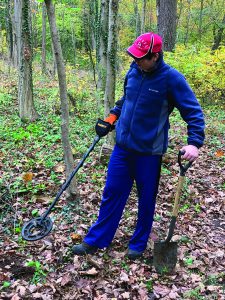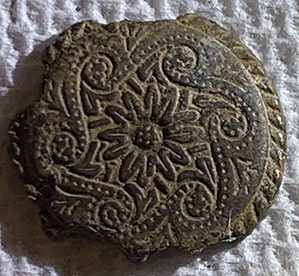Tired of the same old hikes, bike rides and neighborhood walks? We know. It was a long summer and fall, and now it’s a long winter. But we’ve got you covered. Check out these 5 out-of-the-box ideas for some outdoor fun (that you probably never thought of before).
1. Revisit Pokémon Go
If you’re trying to get your video game loving kids off the couch, Pokémon Go is your go-to. All the rage in 2016 when it came out, the free download is experiencing a pandemic revival as it’s seriously a great way to experience nature in a socially distanced way. The idea is, as users walk around the real world, Pokémon characters pop up on the game map on their phones. Users throw (virtual) Poké Balls to capture them. The aim is to collect as many different characters as possible. Another feature of the game is Poké Stops which are real life locations where users can usually collect free Poké Balls (used to catch Pokémon). Some hot spots in South Jersey include the Ocean City boardwalk, Rowan University, Laurel Acres Park in Mt. Laurel and Kings Highway in Haddonfield.
2. Search for buried treasure
 Geocaching is kind of like searching for pirate treasure. But instead of using a paper map, you use the GPS coordinates on your phone to locate a cache, often knickknacks carefully hidden in containers by fellow adventurers. Caches might be stashed in a rock cleft, buried under a log or hidden behind a bush near a hiking trail. Once you find the booty, you either take it and replace it with something else or just rebury it and log it for the next adventurers to find. Of more than 3 million active geocaches worldwide, hundreds are planted in South Jersey, often in beautiful spots off a well-worn trail. To start your adventure, download the official app, Geocaching, and create a free profile or sign in with Facebook. Once you’re registered, you’ll see all the active geocache locations near you. From there, you choose the location of the geocache you want to find and the app will open a map that will help take you there. The map will lead you to the general area, but the geocache might not always be directly in front of you. Visit traillink.com to find South Jersey geocache trails.
Geocaching is kind of like searching for pirate treasure. But instead of using a paper map, you use the GPS coordinates on your phone to locate a cache, often knickknacks carefully hidden in containers by fellow adventurers. Caches might be stashed in a rock cleft, buried under a log or hidden behind a bush near a hiking trail. Once you find the booty, you either take it and replace it with something else or just rebury it and log it for the next adventurers to find. Of more than 3 million active geocaches worldwide, hundreds are planted in South Jersey, often in beautiful spots off a well-worn trail. To start your adventure, download the official app, Geocaching, and create a free profile or sign in with Facebook. Once you’re registered, you’ll see all the active geocache locations near you. From there, you choose the location of the geocache you want to find and the app will open a map that will help take you there. The map will lead you to the general area, but the geocache might not always be directly in front of you. Visit traillink.com to find South Jersey geocache trails.
3. Explore the Revolutionary War era


The old clock tower and the statue of American patriot Thomas Paine in Bordentown
There are enough historic homes, battlefields and cemeteries in South Jersey to piece together what it was like to live in the war-torn colony that was home to American patriots, British loyalists and even Hessian (German) soldiers. Visiting these few historic towns alone will keep you busy for days. And there’s plenty more to explore.
Walk the tree-lined streets of Bordentown where patriots Francis Hopkinson and Thomas Paine lived. Stop at Old City Hall (11 Crosswicks Street), with its Queen Anne clock tower, Bordentown Friends Meeting House (302 Farnsworth Ave.) and Hilton House (100 Walnut Street), the site of a private school in the 1700s.
In Mt. Holly, start at Pine Street to get a sense of the Battle of Iron Works Hill, the successful diversion General Washington needed to prepare for the decisive Battle of Trenton. Visit the graves of soldiers at Saint Andrew’s Graveyard and the Stephen Girard House (211 Mill Street), which was a retail store back in the day.
Haddonfield’s Indian King Tavern (233 Kings Highway E.) is well known as the site where the New Jersey legislature met in wartime. But don’t stop there. Across the street is the Guard House, where anyone suspected of aiding the British were held before trial. Check out Greenfield Hall (343 Kings Highway E.), home to the Haddonfield Historic Society.
4. Visit South Jersey ghost towns

Star trails behind Batsto mansion
We can’t promise actual ghosts but you might get a spooky vibe at the once bustling places that time forgot. There’s several to explore in the Pine Barrens. Best known is Batsto Village. Located off Route 42 in Hammonton, over 40 original structures are maintained as historic sites. Next visit Gloucester Furnace, which was built in 1813 and deserted by 1848. There are 3 houses that remain today at the site located along a dirt/sand road off County 624 in the northern (mostly uninhabited) part of Egg Harbor City. Atsion Village also offers its share of creepy history. Start at Atsion Mansion (off Route 206 in Shamong), built by iron magnate Samuel Richards in 1826. Within walking distance, you’ll find a church, schoolhouse, mansion, company store and one home dating back to the heyday.
……………………………………….
Finding our own pandemic escape
By Jayne Jacova Feld, Executive Editor
At the start of the pandemic, my husband and I brainstormed ideas for safely getting the kids off their screens and into fresh air. Recalling how much they used to love digging in the dirt and sand for imagined treasures and (fake) dinosaur bones, we bought them a metal detector and turned the search for relics of the past into our new favorite family pastime.

Lee Bloom, 15, found this button, likely from Colonial times, at Fernbrook Farms in Chesterfield

So far the boys (ages 12-17) have found a men’s ring, a pocket watch possibly from the 18th Century, some arrowheads and – the best so far – a button likely from Colonial times. We’ve hit Ocean City beaches, county parks, a Burlington County farm where we get our organic veggies as well as the woods behind our home.
It’s pretty easy to get started metal detecting with an entry-level device, a shovel and patience (lots of it). As you get sucked in, you’ll want to spend time studying historical maps, learning about weather patterns and soil erosion as well as local history to pinpoint where you’ll likely get the best haul. But don’t expect immediate gratification. Often when the detector is beeping madly, the find is worthless bottle caps and other trash, and then you’re back to square one.
But wait, before you go: beware of restrictions. You can’t dig up state lands or historic sites, and be sure to get written permission to detect on private land. You can find a cheap-ish metal detector for under $200. Just be sure the one you’re eyeing is lightweight, portable and comes with displays that help identify if the buried object is iron, gold or silver. Happy digging!














